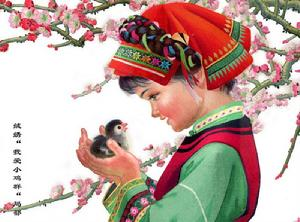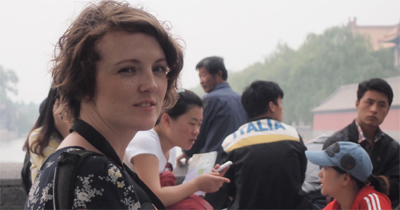Suzhou Embroidery has a history of more than 2,500 years, known for its "delicacy, exquisiteness, elegance and conciseness" and honored as "China's Best Embroidery" and "National Treasure of China."

According to the Collection of Stories by Liu Xiang in the Western Han Dynasty, about 2,500 years ago, "people wearing embroidered clothes and fur coats" had been a popular fashion in the Wu Kingdom of the Spring and Autumn Period.
In the Three Kingdom Period (220-280), the younger sister of Zhao Da, prime minister of the Wu Kingdom, embroidered China's first military map and was honored, "the best embroiderer" by her contemporaries.
In the Biography of Jiang Qin, Chorography of the Wu Kingdom, the History of the Three Kingdoms, it is written that, "garments for wives and concubines are all decorated with embroidery," indicating the embroidery had earned remarkable recognition for its quality and quantity.
During the Song Dynasty, embroideries for appreciation appeared in Suzhou. According to the Collection of Artworks by Zhang Yingwen, "the embroidery in the Song Dynasty could boast of skillful applications of fine threads, dense stitches, fantastic and dazzling colors."
Good Suzhou embroideries are better than paintings due to its vivid representations of different landscapes far and near, various buildings against a deep backdrop, lively figures, graceful flowers and gurgling birds, which describe exquisite craftsmanship and vivid images from the Song Dynasty.
The Ming Dynasty appears to be a critical period for Suzhou Embroidery development. During the reign of Emperor Jiajing (1500-1566), Gu Embroidery of Dew Fragrance Garden arrived in Shanghai, which influenced Suzhou Embroidery style.
Han Ximeng, representative of Gu Embroidery, demonstrated the full play of his stitching skills and harmonized presentation of colors based on painting techniques, creating incisive, vivid and exquisite embroideries.
Borrowing from Gu Embroidery's advantages, Suzhou Embroidery forged a unique style of beautiful patterns, elegant colors, diverse stitches and meticulous embroidery to capture nationwide recognition.
Shen Shou, Suzhou artist, lived in the late Qing Dynasty and the early Republic of China. He borrowed from the light and shade principle in Western painting, attached much attention to life-likeness of objects, initiated painting-imitational embroidery and played a role to improve, develop, promote and disseminate Suzhou Embroidery skills.
After the founding of the People's Republic of China, Suzhou Embroidery entered a new era of development as "household craftsmanship" under the Party's artwork guidelines of "conservation, developments and improvements."
Throughout its several-millennium history, Suzhou Embroidery has showcased its charms; unique characteristics and diverse stitching techniques that had been displayed on soft and lustrous silk, creating unparalleled beauty of oriental artwork.
It showcases inclusiveness for novel artistic characteristics that can produce artworks, such as oil paintings, gouaches, traditional Chinese paintings and photos.
When embroidering, artists make recreations that can realize better visual and artistic effects.
For a scholar focusing on Australia's public diplomacy, working as a recreational manager in China may never be part of his career path. But Bradley McConachie does have lots to say now about his special experience at a resort in the picturesque tropical coastal city of Sanya in South China's Hainan province.

One of the potentially most traumatic things a girl has to go through is finding a new hairdresser.